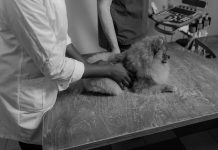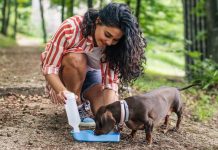Welcoming a new puppy into your home is an exciting and joyful experience, filled with wagging tails and playful antics. As you embark on this delightful journey, it’s important to lay the foundation for a harmonious relationship through effective training. Positive reinforcement, a gentle and encouraging approach, can transform the training process into a rewarding experience for both you and your furry friend. In this article, we will explore the principles of positive reinforcement and provide you with practical techniques to nurture good behavior in your puppy. With patience, consistency, and a pocket full of treats, you’ll discover how to guide your pup towards becoming a well-mannered companion, all while strengthening the bond between you. Let’s dive into the heartwarming world of positive puppy training and unleash the potential within your new four-legged family member.
Creating a Rewarding Environment for Your Puppy
To cultivate a nurturing atmosphere for your puppy, it’s essential to focus on creating a space where they feel safe, loved, and motivated to learn. This can be achieved through positive reinforcement, which not only strengthens your bond but also encourages good behavior. Here are a few ways to establish this rewarding environment:
- Consistency is Key: Use the same commands and gestures each time you train. This helps your puppy understand what is expected and reduces confusion.
- Immediate Rewards: Always reward your puppy promptly after they perform a desired behavior. This helps them associate the action with the positive outcome.
- Use of Treats and Praise: Offer small, healthy treats or a gentle pat and verbal praise to reinforce good behavior. Make sure the treats are appropriate for your puppy’s diet.
- Create a Safe Space: Ensure your puppy has a dedicated area where they can relax and feel secure. This will help them feel more comfortable during training sessions.
By integrating these practices into your daily routine, you’ll not only enhance your puppy’s learning experience but also foster a loving and cooperative relationship that will last a lifetime.

Mastering Timing and Consistency in Positive Reinforcement
One of the crucial elements in effective puppy training is the art of timing and consistency when applying positive reinforcement. Immediate rewards are key; puppies have short attention spans, and a delay between the desired behavior and the reward can create confusion. Aim to offer praise or treats immediately after your puppy exhibits the correct behavior. This helps them associate their actions with positive outcomes swiftly.
Consistency is equally important. Make sure everyone in the household is on the same page regarding the commands used and the behaviors that warrant rewards. Here are a few tips to ensure consistency:
- Use the same verbal cues and gestures each time.
- Ensure all family members are aware of the training rules and expectations.
- Stick to a regular training schedule to reinforce learning.
- Adjust rewards based on the complexity of the task, ensuring they remain motivating.
By mastering timing and consistency, you lay a solid foundation for your puppy’s learning, fostering an environment where they can thrive and grow into well-behaved companions.
Choosing the Right Rewards to Motivate Your Puppy
When it comes to motivating your puppy, selecting the right rewards is key to successful training. Puppies, much like people, have their own unique preferences, and discovering what truly excites your furry friend can make all the difference. Start by experimenting with a variety of treats and toys to see which ones grab their attention. High-value treats such as small pieces of cooked chicken or cheese can work wonders, especially during those challenging training sessions. Additionally, praise and affection should not be underestimated; sometimes a heartfelt “good job” accompanied by a belly rub is all the encouragement they need.
- Use treats sparingly to maintain their value and prevent overfeeding.
- Incorporate playtime with their favorite toy as a reward.
- Offer verbal praise and gentle petting to reinforce good behavior.
- Rotate rewards to keep your puppy engaged and eager to learn.
Remember, the goal is to create a positive association with the desired behavior. By tailoring your rewards to your puppy’s likes, you’ll foster a learning environment that is both enjoyable and effective.

Building a Strong Bond Through Positive Interaction
Establishing a meaningful connection with your puppy is the cornerstone of effective training. Positive reinforcement is a powerful tool that not only encourages good behavior but also strengthens the bond between you and your furry friend. Here are some ways to incorporate this technique into your training routine:
- Use Treats Wisely: Offering a small, tasty treat immediately after your puppy performs a desired behavior helps them associate the action with a positive outcome.
- Verbal Praise: Your voice is a comforting tool. Use enthusiastic, happy tones to praise your puppy when they follow a command. This reinforces the behavior and shows your affection.
- Playtime as a Reward: Incorporate short play sessions as a form of reward. This not only serves as a break from training but also builds a joyful relationship.
- Consistency is Key: Ensure everyone in the household uses the same commands and rewards. This avoids confusion and helps your puppy learn faster.
By focusing on these positive interactions, you not only train your puppy effectively but also nurture a trusting and loving relationship that will last a lifetime.
















